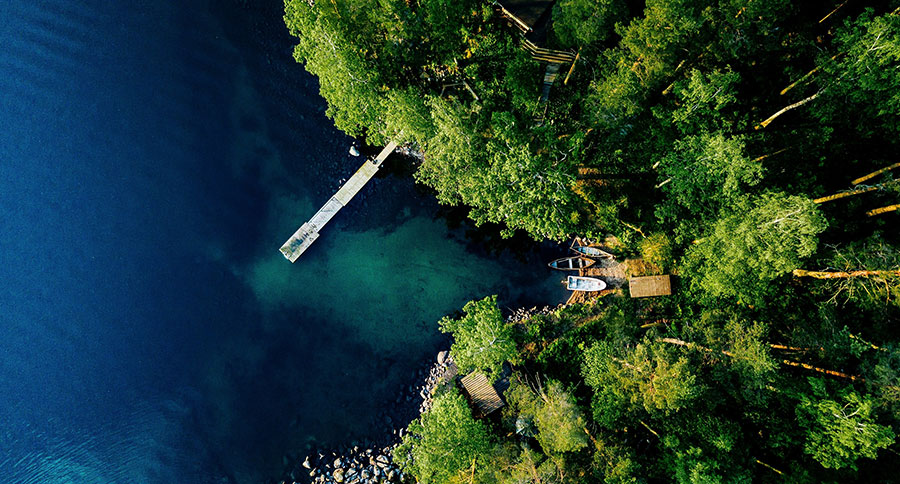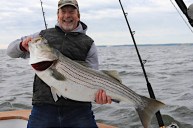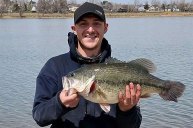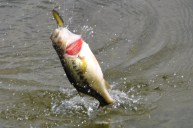Finding a fishing report can sometimes be an exercise in frustration.
So, you want to know what's biting in your area but you're not having any luck getting a fishing report? We're not surprised. It's a common problem.
How can you consistently get accurate reports that can help keep you on the fish?
We have some ideas on that for anglers to try out if you're frustrated about not getting enough information about your favorite lake or stream.
State Wildlife Agencies
If you only visit the webpage of your state's wildlife agency once a year for your fishing license, you're missing out. Most states and a few Canadian provinces put out regular reports and fishing forecasts to indicate how the bite is going.
I live in Michigan, and the Department of Natural Resources here puts reports that are often excellent. I quickly found out that trolling firetiger color crawler harnesses is the hot pattern for walleye this week in Lake St. Clair, smallmouth bass are really hitting on gobies right now, and Tawas is producing decent numbers of panfish and sunfish on live bait under bobbers.
For most states, these types of DNR fishing reports are simple overview of what's happening in the most popular waters of the state. Most of what is in Michigan's report is centered around the Great Lakes.
Some states, like New Jersey, don't appear to have updated their fishing reports in some time. It happens sometimes. Many of these wildlife agencies are often strapped for funds and a comprehensive weekly fishing report probably just isn't high on the list of priorities at times.
Other states, like Utah, go all out with their fishing reports. The Utah Division of Wildlife Resources has an amazing interactive map where you can explore the whole state. It has icons indicating how hot the bite is and if you click on them, you get individualized reports on exactly what is biting, where and on what.
I was able to quickly find out anglers are killing it with crankbaits for rainbow trout and brown trout in the Green River Below Flaming Gorge Dam.
I'll admit, I'm jealous of Utah anglers, because this is an amazing tool. If your state does something like this, count yourself lucky.
Some states will allow you to sign up for automatic email updates. That way, you don't have to go searching for a report, it shows up in your inbox automatically.
The one downside to state fishing reports is they are often focused on good numbers on the most popular waters. Ohio and Pennsylvania will give you a lot of Lake Erie reports. For Texas, expect a lot of freshwater reports for places like Lake Fork or saltwater reports for places like Galveston. Bass fishing reports for Lake Lanier in Georgia are pretty easy to find. In Minnesota, expect a lot of Lake of the Woods fishing reports. In South Dakota, Devils Lake fishing reports are common.
Whatever your state does, I highly recommend bookmarking the wildlife agency page in the browser on your smart phone. It'll come in more handy than you realize.
These are great if you fish these big waters regularly, but it doesn't help if you're planning a fishing trip to a small lake or stream But don't worry, we have some other options you can look at.
Social Media
I think most people have a love-hate relationship with social media these days. Whether it's Facebook, Twitter, Instagram or whatever. Believe it or not, they CAN be helpful in getting a report on the bite.
Sometimes it's a simple as posting a message out there to your friends: "Anyone getting any decent bites lately?" There's no guarantee people will share information with you, but it's worth a try, especially if you fish a small lake like I do. There just aren't comprehensive reports online for a body of water that small.
Another thing to try is to send a message to or develop a friendly relationship with a professional fishing guide. These men and women sometimes even post fishing reports directly to their social media channels.
The most effective guides want you to know when the bite is hot because you're more likely to utilize their services. Often, they're more than happy to tell you how they're killing the striped bass on topwater lures at the moment.
Another thing to try is to simply search for the name of the lake or river you want to fish on Instagram or Twitter. If someone caught a giant flathead or channel catfish locally, you might not be able to get the exact location out of them, but they might be willing to tell you it hit a stinkbait.
Don't forget about YouTube, either. While it's less common, there are some channels that will analyze everything that happened on a particular waterbody last week and tell you what you should expect for the following week. It's worth a try, if nothing else.
Fishing Apps
Looking for a Cape Cod fishing report? Odds are you can find a good one on a fishing app installed on your phone or mobile device.
Check out apps like FishBrain and FishAngler. These highly-rated apps are consistently updated by a community of anglers sharing data. You can easily connect with another local angler to find out where the largemouth bass are nailing spinnerbaits right now. Want to know if the crappie are spawning yet? These apps can tell you.
The nice thing about many of the apps is that they often give you way more than just a simple report on what fish are hitting what in Lake Hartwell. They often come equipped with underwater topo maps, solunar fishing charts and bite forecasts to tell you the best times to be on the water. It's almost better than your traditional fishing report!
Some of the apps even give you the ability to "follow" other anglers. This means you and your buddies can easily share data on exactly what, where and when you're catching fish.
You can know at a moment's notice if the trout fishing is hot at the local state park or not. Isn't technology great?
The other nice thing about utilizing an app is that if you're fishing one of those small bodies of water we mentioned earlier, you're more likely to see data on those waters here than anywhere else.
Some other apps to check out include Solunar Time Forecast, Netfish, Fishing Points and Fishing Spots.
Visiting or calling local tackle shops
Sometimes, all else fails and you must do things the old-fashioned way. Visiting or calling a local tackle shop to find out what's up can be really productive. It's true, they're good for more than selling you some cut shad or minnows.
If you're visiting a remote spot, say a Colorado mountain location, calling a tackle shop may be the only way to find out how the fly fishing is going.
Most tackle shop owners are more than happy to tell you whether or not the white bass bite is hot right now. In fact, I've found in the past that when visiting a new location, especially out of state, the easiest way to get on the bite is to go talk to the locals.
Often you can find a bunch of old-timers hanging around these places swapping stories, and they can also be the source of a wealth of information if you strike up a friendly conversation.
If there isn't a local tackle shop, try a bar or restaurant. If there's a fish hatchery in the area, the employees can probably provide a wealth of knowledge. Heck, you could even try talking to the local conservation officer or just asking some guys who are bridge fishing how the bite is going. Often, these are going to be some of the best reports you can get.
Going and talking to people in person is the way people used to get fishing reports in the old days, and it still works. The thing is, many anglers don't even think to try this anymore.
Instead they go on a trip and end up spending more time getting frustrated and bored than they do catching fish. It's their loss for not thinking outside the box.
Hopefully these tips will help you find a good source of information to get the most out of your time on the water this season!
For more outdoor content from Travis Smola, be sure to follow him on Twitter and check out his Geocaching and General Outdoor Youtube Channels.
NEXT: THE SURGE WRASSE MIGHT BE THE MOST COLORFUL FISH YOU CAN CATCH
WATCH





